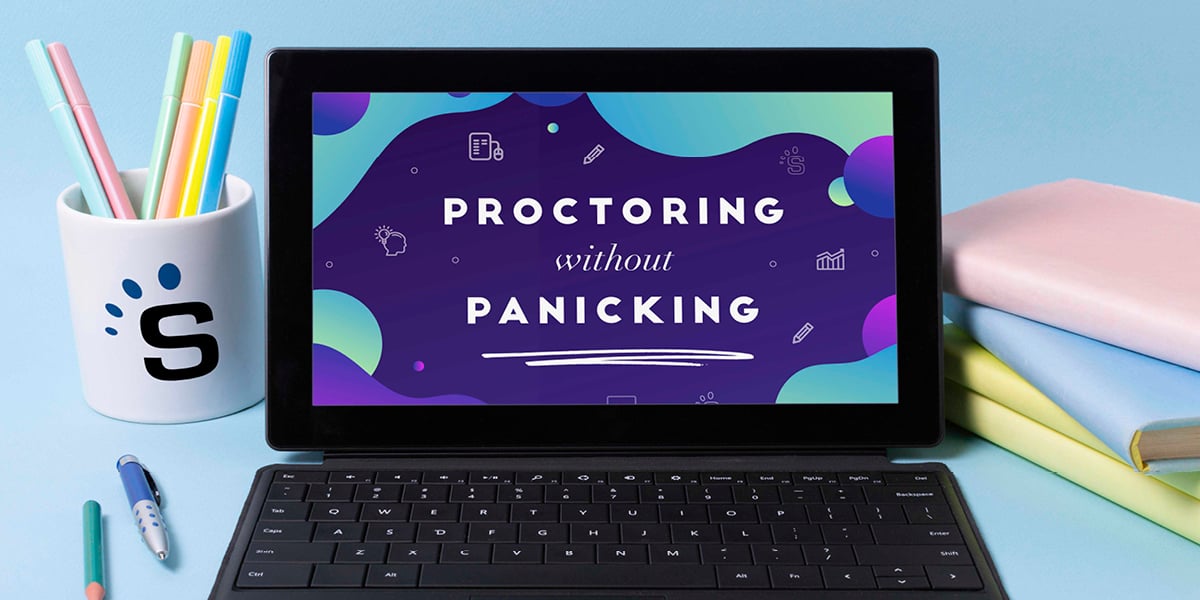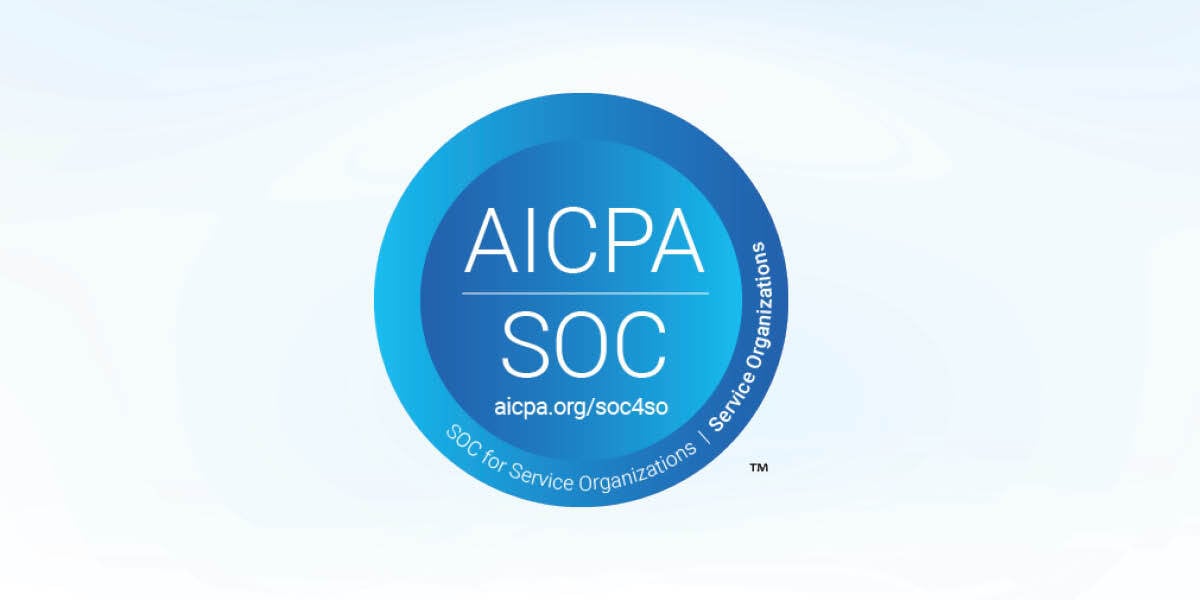
Quizzes and examinations are a normal part of teaching and learning, but that doesn’t make them easy. In fact, many students suffer from test-related stress and anxiety. This common condition makes it difficult for said students to focus and subsequently perform well on the tests, even if they know the material.
In this blog, we'll review how to proctor students without causing panic, without pestering, and without provoking.
What is Test Anxiety?
Test anxiety may look and feel different from student to student. For some, it may be associated with racing thoughts, fear, anger, or an inability to concentrate. According to the Anxiety and Depression Association of America (ADAA), test anxiety can also manifest physical symptoms, including nausea, headaches, excessive sweating, lightheadedness, shortness of breath, and increased heartbeat.
Most often, test anxiety occurs when students have an underlying fear of failure, when they feel extreme pressure to do well, or when they’ve had poor previous testing experiences.
How the Shift to Online Learning Impacted Test Anxiety
For students who already face test-related stress and anxiety, the rise of remote learning presented new challenges: sudden and dramatic changes to routine, self-isolation, technical and operational unfamiliarity, and even the inability to control their own environment.
Test anxiety is officially recognized as a type of performance anxiety, similar to stage freight, by the ADAA. The new challenges created by the pandemic, including needing to set up webcams, online learning portals, test proctoring, and more, compounded the normal stress and anxiety of tests and examinations. Students with test anxiety now need to manage stress and anxiety over feeling overexposed while on camera, not being able to control the environment, seeing themselves on the screen (which can be distracting and disorienting), time limits, and count down clocks – among several others.
These anxiety triggers can and do distract students from taking the test. As a result, a person does not get the chance to accurately demonstrate their mastery of the material via the exam. Students who face debilitating levels of test-related stress and anxiety may need specific accommodations for test proctoring that best suits their needs.
Providing Testing Accommodations that Fit Students’ Needs
Proctoring is not a one size fits all process, no one proctoring modality will provide a positive experience for all students. Institutions should provide alternate testing environments, which may include a non-webcam proctoring modality, face-to-face vs. virtual testing, or other unique modalities. This is where utilizing a multi-modal proctoring management system is integral, providing students with modality choices that will be conducive to their needs.
There are several benefits when it comes to using a proctoring management system. They include:
- Appropriately handling the configuration of accommodations
- Securely communicating sensitive information about accommodations
- Eliminating un-secure and casual emails between disability services offices, instructors, students, and proctors
- Archiving all communication
- Having a single point of truth for all information
- Informing students about all proctoring options available to them
As a proctoring management system, SmarterProctoring allows you to provide multiple face-to-face testing options including a network of hundreds of collegiate and professional testing centers, approved proctoring professionals, and even the instructor as a proctor, all from within a user-friendly interface right within the course, so that they can schedule the proctoring session securely and privately. SmarterProctoring also allows students to take their exams via online or automated proctoring.
Implementing a Test Anxiety Scale
Despite how common test anxiety is, not every student faces test-related stress and anxiety. Creating and implementing a test anxiety assessment provides instructors with the knowledge to help the students who may need it.
To better understand the needs of each student, educators are encouraged to implement the Test Anxiety Scale, a ten-item scale along with a custom, individualized score report that provides a reliable and valid measure of test anxiety impairment. The scale was developed in 2004 by Dr. Richard Driscoll and numerous research projects have been conducted utilizing the scale.
Over a span of time, changes in test scores on the anxiety scale have been found to be associated with changes in test scores. Meaning, when a student’s anxiety scores fall, test scores improve (and vice versa).
The scale also allows educators to separate components of anxiety from the causes and address them individually. Components may include:
- Cognitions (worry, dread, fear of failure)
- Physiological features (tension, overstimulation, headaches, sweating)
- Performance (impairment, going blank, freezing)
Students who face test anxiety when taking exams may also face anxiety when their examination is proctored, whether it’s in-person or virtually. Anxious feelings can be exacerbated as soon as students feel as though they are the center of attention, and this can be triggered especially by the use of a webcam during an exam.
By implementing a scale, educators can determine how anxious a student is and determine a plan for success through effective preparation, scheduling, and communication. A scale and/or assessment will help institutions to pinpoint who exactly needs assistance or guidance, and how much.
Helping Students Cope with Test/Performance Anxiety
Teachers, professors, and institutions all have roles that can be outlined to better assist students who face test anxiety, especially related to performance and proctoring.
As previously stated, it’s important for institutions to provide different proctoring modalities that meet the unique needs of students. For several students, the choice of a proctoring environment is not just choice-based on preference or cost, but influenced by a need for accommodations for severe test anxiety, or any other disabilities physical or emotional in nature. Proctoring should not be a one size fits all service.
Educators also play a role in the success of students who face test/performance anxiety related to proctoring. Teachers and professors must be willing to make adjustments. It is pertinent that educators determine what their students need, instead of assuming that all learners will be prepared or comfortable with proctoring in this new assessment environment. Educators must be communicative and transparent, passing on information as often and objectively as possible.
Learners also hold some responsibility in coping – preparing themselves, studying for the test, knowing their environment to the best of their ability, becoming familiar with the technology, and seeking out appropriate help when needed.
When institutions, educators, and students work together to implement scales and assessments that help to determine which modalities are the most effective choice for students with test/performance anxiety, success is not just possible – it can be a reality.
The Takeaway
As remote education continues, students, teachers, professors, and the like are all living through this global crises and it’s more important now than ever before to be aware of someone’s mental health – especially considering the adjustments needed due to remote learning.
Institutions need to provide appropriate accommodation to learners, as well as continue to reinforce the importance of transparency and patience in order to see success in students with test-related stress and anxiety.
To learn more about preventing panicking, pestering, and provoking during proctoring, click here to learn more about how SmarterProctoring can help.








